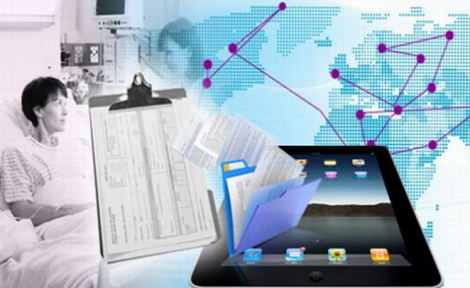 With a delay of two years, the electronic health record (DES) entered into force. Starting Saturday, all healthcare providers, no matter if they are public or private, whether or not they have a contract with the National Health Insurance House (CNAS), are required to fill details in the DES.
With a delay of two years, the electronic health record (DES) entered into force. Starting Saturday, all healthcare providers, no matter if they are public or private, whether or not they have a contract with the National Health Insurance House (CNAS), are required to fill details in the DES.
”The electronic health record is a collection of medical information about the patient, centralized at national level, collected from all the healthcare providers with whom the patient came into contact,” says the law and the DES records:
- all medical data, including consultations, referrals, tests, prescriptions, clinical observation sheets, history and events, information that will be continuously collected
- the DES manages online all medical information that the healthcare providers and patients fill in
- all medical data on a person’s health can be found in the DES
- the DES will be useful in emergency situations when the doctor will be able to see the relevant data for saving the life of a patient
The system can be accessed based on the health card or the code of the insured person / CNP and the unique security matrix available for each insured person.
The most important aspect for the confidentiality of these data is that the doctor can access all information only if the patient gives him this right or if the patient allows the doctor to check the file in his presence.
Otherwise, doctors have automatic access to a single section of the DES, respectively the Emergency summary, containing information needed in critical health situations:
- allergies and intolerances
- internal prostheses and other medical devices
- transplants
- relevant emergency medical procedures
- arteriovenous fistula
- chronic diseases
- hematologic diseases relevant in case of emergency situations
- communicable diseases relevant in case of emergency situations
- underway treatments
- recent hospitalizations
Besides the Emergency summary, the DES has other four sections:
The „Medical History” section, which includes :
- diagnosed allergies and intolerances;
- diagnosed chronic diseases;
- the history of diseases / diagnoses (other than the allergies and chronic diseases);
- medical interventions and procedures performed, healthcare services, immunizations;
- medication given in clinical trials;
The „Antecedents declared by the patient”:
- collateral hereditary, physiological, pathological antecedents;
- Information about the life environment and style;
- information about the consumption of alcohol, tobacco, caffeine or drugs;
The „Medical documents” section:
- general clinical observation sheets for continuous hospitalization;
- general clinical observation sheets for day hospitalization;
- consultation sheets from medical specialists;
- consultation sheets form family doctors;
- references for clinical examinations;
- references for paraclinical examinations;
- recommendations for home care;
- recommendations for medical devices;
- medical prescriptions from doctors;
- prescriptions from pharmacies;
The „Personal data” section:
- name and surname
- date of birth
- ID card
- sex, age, blood group
Accessing the DES
Any insured patient with the local healthcare system can access their own electronic health record using the DES portal, at www.des-cnas.ro.
A person can login on the DES portal only after a doctor generates a security matrix and the patient sets the access password.
A patient can login:
- either by using the national healthcare card and the assigned PIN, also the access password;
- or by using the code provided with the healthcare card (CID) or the CNP, along with the security matrix and the access password.
Once a patient accesses the electronic health record, he/she:
- will have access to their own medical information
- can add medical information in the ” antecedents declared by the patient” section
- will be able to give or withhold the right of access of doctors to the DES.
The security matrix “consists of a table with 8 rows and 8 columns, each position in the table containing a code randomly generated by the DES system. The matrix has a unique number assigned, automatically generated by the DES system.”
- Patients will receive the matrix from their doctors, based on the ID card
- „The matrix will be handed over to the patient on a printed A4 paper, immediately after printing. The top half of the sheet is signed by the patient and kept by the doctor while the bottom half containing the table, along with the instructions for using the security matrix, is handed over to the patient, ” according to the regulation.
- After receiving the matrix, patients will have three days to set the access password on the DES portal and can generate afterwards other matrices directly on the portal.
There are currently over six million electronic files that will be imported from the old system in the DES.









